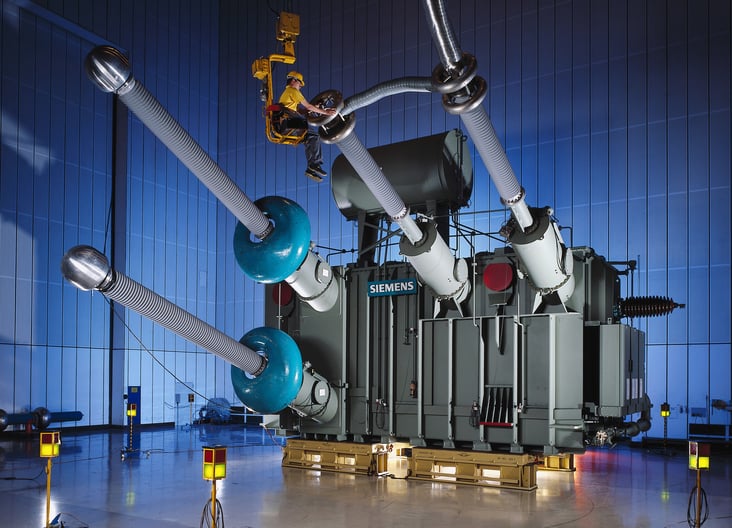This post is one in a series featuring the complete slate of advanced energy technologies outlined in the report This Is Advanced Energy.

There are two types of currents that can be used when transmitting electricity: Alternating Current (AC) and Direct Current (DC). The electric grid originally developed around AC power because it was easier to manipulate and transport ef ciently over long distances compared to DC power. Technological advancements have now made high voltage DC (HVDC) lines a viable option for long distance transmission. With HVDC, converters draw AC power from the grid and convert it to DC power. The DC power flows over the transmission line, then goes through a second conversion back into AC power before it is injected into the grid. Converters at both ends allow HVDC lines to transfer power between regional grid interconnections without disruption.*
HVDC has been used for decades in underwater and underground transmission projects where AC use is impractical. Its use in aboveground transmission is now increasing, primarily for moving large amounts of remote wind, solar, and hydroelectric power to distant load centers. The planned TransWest transmission project is expected to save California customers $600 million per year by delivering low-cost wind power from Wyoming. In 2014, global investment in HVDC systems amounted to $6.1 billion, a 61% increase over 2013.
HVDC transmission has important advantages over comparable AC lines. The higher power density of HVDC lines allows them to carry the same amount of energy as AC lines while using narrower rights-of-way and fewer towers, which reduces land requirements and eases siting considerations. HVDC lines do have xed upfront costs regardless of line length, as the lines require converters to tie into the AC grid. However, energy losses are lower on HVDC lines than for comparable AC lines. An 800 kiloVolt (kV) HVDC power line over 1,000 miles loses less than half the power of a comparable 765 kV AC transmission line, including the conversion at both ends. The lower line losses and need for fewer substations to correct for power quality result in cost savings over longer distances, such that HVDC transmission is competitive when spanning more than 250 miles. HVDC lines can also provide support to the existing AC grid without adding to transmission congestion.
* The U.S. power grid is divided into three major interconnections, one in the east, one on the west and one covering most of Texas. The frequencies in these interconnections are not in sync and therefore AC power cannot flow between them.
